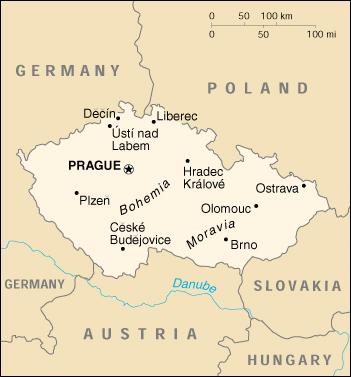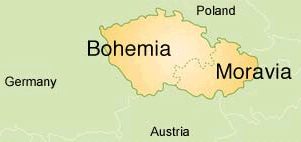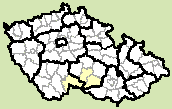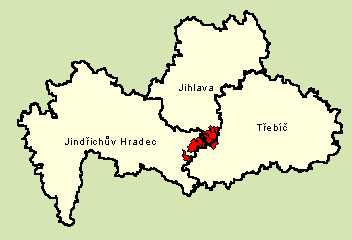
map of the current Czech Republic

Why Our Czech Ancestors Came To America
During the 19th century our ancestors in Bohemia and Moravia were citizens
of the Austrian Empire, ruled by the Habsburg dynasty. Bohemia was bounded
by Austria on the south, Bavaria on the west, Saxony on the north, and
Moravia on the east. (Most of the present Czech Republic was formed from
the region of Bohemia.)
Living as peasants, the common people of central Europe were kept in virtual
slavery, with no political or religious freedom. A peasant worked for free
sometimes for up to 6 months per year for the royal landowner. One could
not marry someone of a different parish or travel to another village without
special permits from the feudal lords. The aristocratic families owned all
land and controlled all aspects of village life.
A revolution in 1848 was quickly suppressed, but resulted in the abolition
of serfdom. Peasants were then permitted to resettle or move. Because of
the industrialization of Europe, rural families increasingly found it
difficult to survive or offer a suitable future for their children. There
were constant threats of wars and too often the young men of Bohemia and
Moravia were drafted to fight and die in Habsburg wars far from home.
During these challenging times news from America reached the rural villages.
The young United States needed farmers to colonize the rural states, such as
Nebraska. The allure of free land prompted many to emigrate, though it was
surely a challenge to obtain the necessary funds and permits. Most Czech
immigrants came from economically depressed rural areas in central Europe
and were intellectually and culturally unsophisticated. They left Bohemia
and Moravia primarily for economic reasons, not to escape political
oppression or to seek religious freedom. Our forefathers were not refugees
nor visionary radicals. They were simple peasants in search of land.
Probably never having left their village before, they traveled to Hamburg or
Bremen in northern Germany to embark, crossing the ocean under unimaginable, cramped conditions
with hundreds or thousands of others traveling in the last of the tall
sailing ships or sail-steam ships. Finally reaching their new home in
Nebraska, they made the transition from village peasant to frontier farmer.



area of Knínice and Budec

Intro |
Facts |
Claims |
Documents |
Photos |
Brick Walls |
Theories
E-mail Descendant
